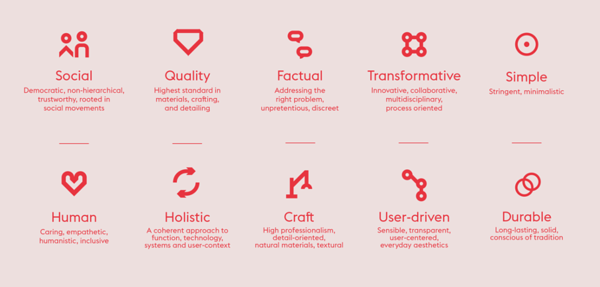Design as a means to improve S3 monitoring?

Danish Design Centre is Denmark’s national design centre that promotes the use of design in public and private innovation. But we also apply design in-house to most of the activities we work with - we are not only thinking design, we are doing design. So, what do we mean by design?
Design is the thinking and acting behind improvements that create value for people. It is about designing new solutions that include the perspectives of the users or the customers. Design methods can be applied in numerous contexts and situations - it is an inclusive, creative, and systematic approach that opens up for identification of solutions beyond the immediately obvious.
Questioning the existing
The question we pose regarding the main challenges behind Empinno Monitor S3 could sound like this: How might we monitor economic progress and development in a manner that is flexible and adaptable towards changing circumstances?
We all know that times change - we read about it all the time; we hear about the lack of qualified labour, remembering that it was the complete opposite a couple of years ago following the financial crisis: unemployment and a lack of jobs. People and companies must change continuously - we need to reduce the amount of CO2, we need to reuse our waste, our materials, we need to become more green or more digitalised.
EU’s structural funds support all these transitions, but sometimes we need to take a moment and consider what needs to be changed and why. For instance, it does not make sense to support companies in creating more jobs if we have a situation with a lack of qualified labour. So how might we make sure that we spend the EU-funds in a wise and adaptable way? And, in this context, how might we identify monitoring indicators that support wise and adaptable spending?
This is the challenge in a nutshell.
Solution?
Of course, there is no immediate solution. The problem or challenge is a complex one, forcing us to consider our approach to the problem itself as carefully as the potential solution. Or, as Albert Einstein said, “If I had an hour to solve a problem I'd spend 55 minutes thinking about the problem and 5 minutes thinking about solutions”. The optimal situation would be to identify indicators that nudge people and companies in the right direction, always considering what that direction is, at the moment of reflection. How do we do that?
Not easy, and perhaps not possible at all. But using design methods might be a start, for example by applying an approach from the design DNA, an inherent part of the work of Danish Design Centre.
In practical terms, it would include a two-step approach:
- Understanding: How do different stakeholders - business operators, clusters, business agencies, and companies - view the monitoring practice as it is being performed today? What are the pain points? And what do they perceive as gain points?
- Developing: Identify potential new or improved indicators of monitoring based on a design approach
Will it work?
In a complex domain like monitoring European smart specialisation strategies across regions and countries, nothing can be taken for granted. The framework is quite strict and Denmark is not alone, so monitoring indicators need to fit with a European practice to provide comparable measures across countries. But we may confront what is possible and acceptable within the set framework, and eventually also identify new or improved indicators which make sense for those needing them as well as for those working with them.
Looking into the future
The mission is therefore to create insights and reflections which may feed into future monitoring practice and lead to improvements. The vision, if we want to aim high, is monitoring indicators that are adaptable and make sense for those needing them as well as those working with them, at any given time. Perhaps this is like putting a man on the moon: Demanding, at times even perceived impossible, but rewarding when it happens and with significant, positive side effects that the world is still benefitting from. We do not need to aim that high with S3 Monitoring, but our common ambitions could lead us further than we might think.
* Caption under the picture: The Danish Design Council together with Danish Design Centre, The Royal Danish Academy of Fine Arts Schools of Architecture, Design and Conservation and Design Museum Denmark, conducted a survey of Danish design in order to identify its exact characteristics – its DNA, so to speak.
Compiled by: Aase Højlund Nielsen, Dansk Design Center. March, 2020.

